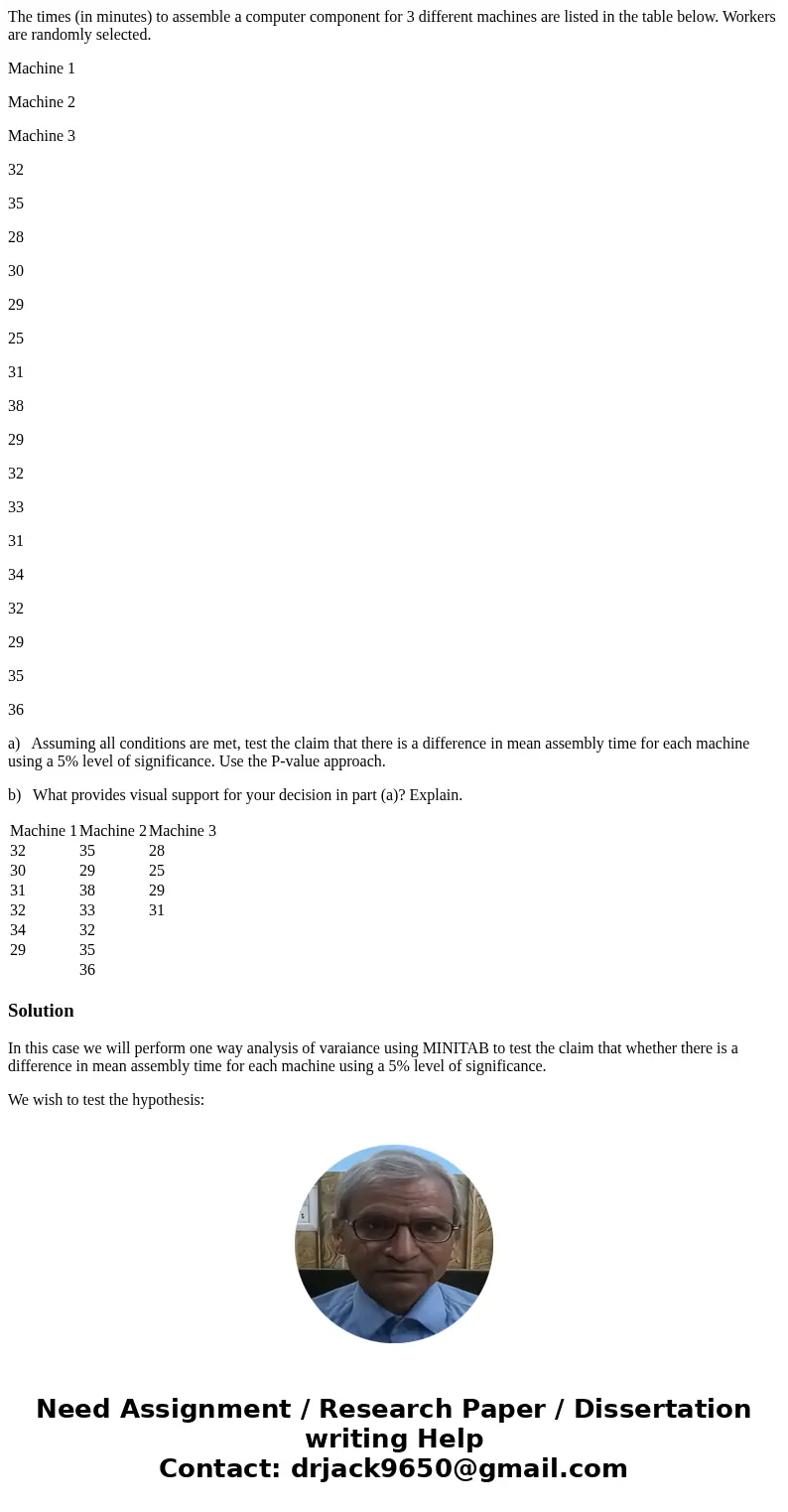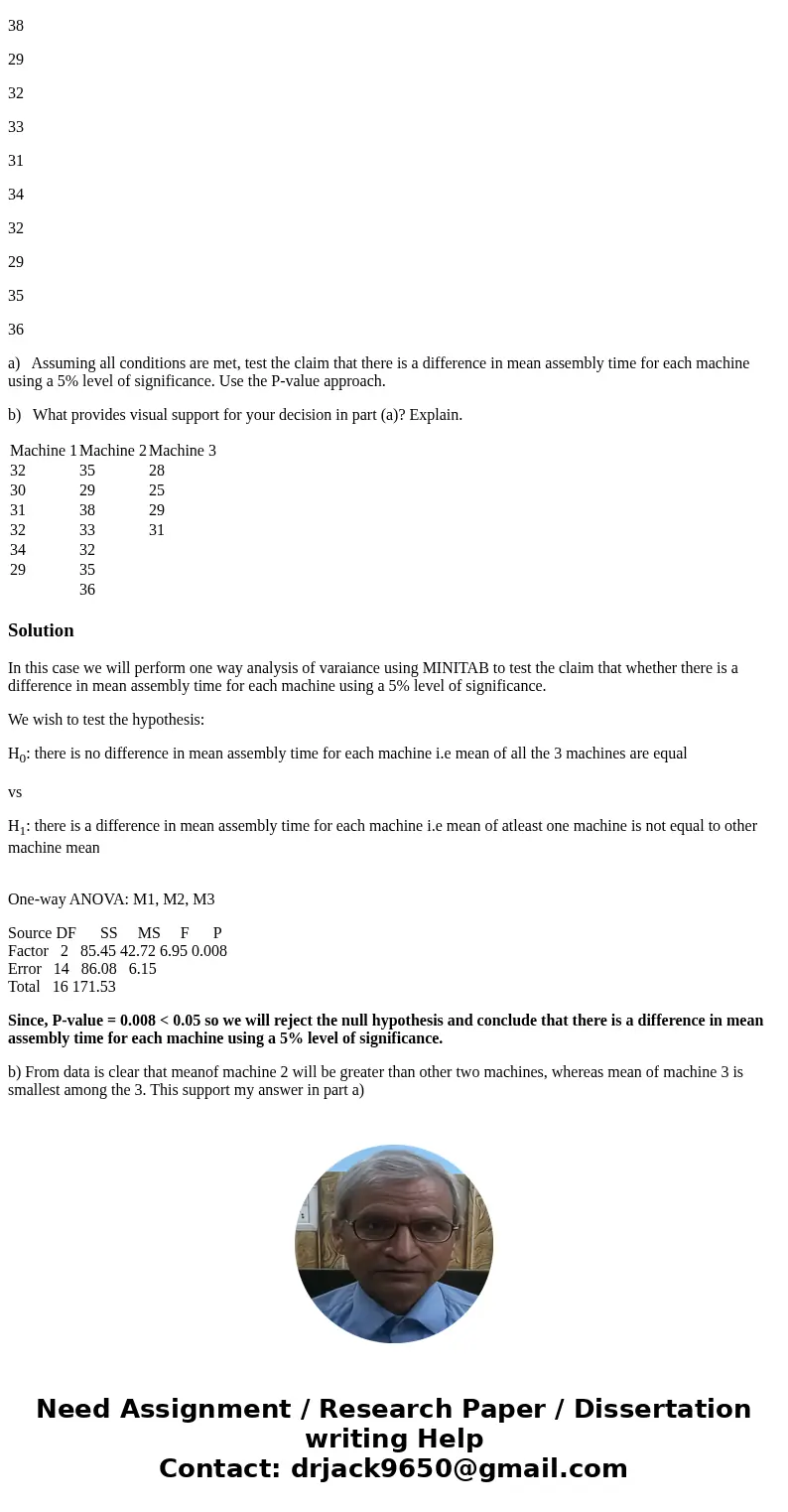The times in minutes to assemble a computer component for 3
The times (in minutes) to assemble a computer component for 3 different machines are listed in the table below. Workers are randomly selected.
Machine 1
Machine 2
Machine 3
32
35
28
30
29
25
31
38
29
32
33
31
34
32
29
35
36
a) Assuming all conditions are met, test the claim that there is a difference in mean assembly time for each machine using a 5% level of significance. Use the P-value approach.
b) What provides visual support for your decision in part (a)? Explain.
| Machine 1 | Machine 2 | Machine 3 |
| 32 | 35 | 28 |
| 30 | 29 | 25 |
| 31 | 38 | 29 |
| 32 | 33 | 31 |
| 34 | 32 | |
| 29 | 35 | |
| 36 |
Solution
In this case we will perform one way analysis of varaiance using MINITAB to test the claim that whether there is a difference in mean assembly time for each machine using a 5% level of significance.
We wish to test the hypothesis:
H0: there is no difference in mean assembly time for each machine i.e mean of all the 3 machines are equal
vs
H1: there is a difference in mean assembly time for each machine i.e mean of atleast one machine is not equal to other machine mean
One-way ANOVA: M1, M2, M3
Source DF SS MS F P
Factor 2 85.45 42.72 6.95 0.008
Error 14 86.08 6.15
Total 16 171.53
Since, P-value = 0.008 < 0.05 so we will reject the null hypothesis and conclude that there is a difference in mean assembly time for each machine using a 5% level of significance.
b) From data is clear that meanof machine 2 will be greater than other two machines, whereas mean of machine 3 is smallest among the 3. This support my answer in part a)


 Homework Sourse
Homework Sourse